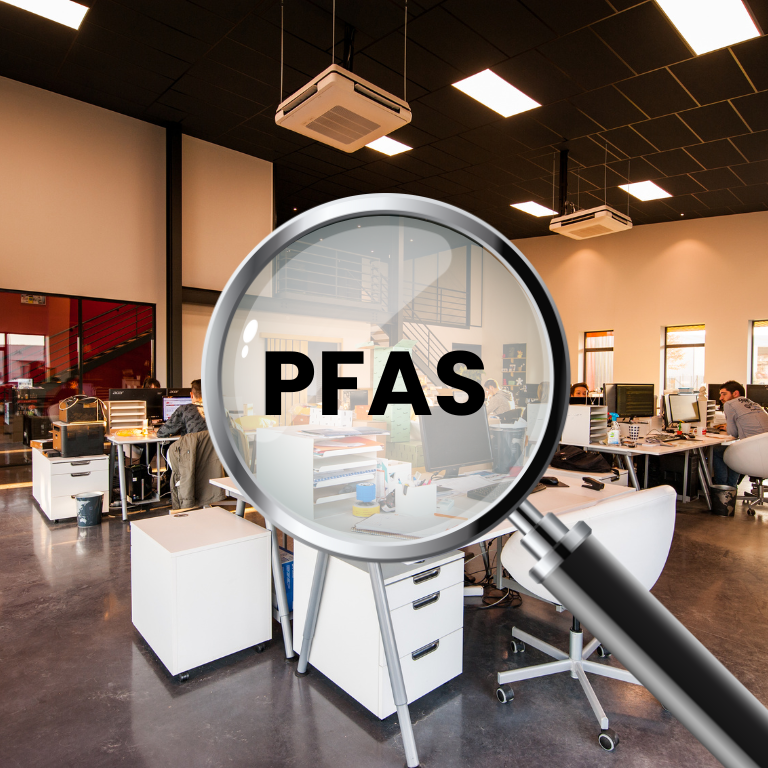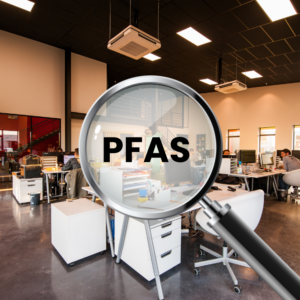How 2025 PFAS Regulations Will Affect Industries

As the health and environmental impacts of PFAS (per- and polyfluoroalkyl substances) gain attention, new regulations are being developed to address these concerns. In 2025, stringent regulations targeting PFAS usage and contamination will take effect, impacting industries from manufacturing to consumer goods. These regulations aim to mitigate the risks associated with PFAS, often referred to as “forever chemicals” due to their persistence in the environment and in human bodies. Understanding how the 2025 PFAS regulations will affect various sectors is critical for businesses looking to navigate compliance requirements, shift production practices, and assess long-term strategies.
Understanding PFAS and Their Health Impacts
PFAS chemicals are synthetic substances used in a wide array of products for their resistance to heat, water, and oil. While their chemical properties make them valuable in various applications, PFAS have been linked to several health issues, including cancer, liver damage, reproductive problems, and immune system effects. PFAS chemicals are especially concerning because they do not break down in the environment, accumulating over time in water, soil, and human tissue.
With these risks in mind, government agencies, particularly in the United States and the European Union, are working to establish tighter regulations on PFAS usage, production, and disposal. The 2025 regulations reflect a growing awareness of PFAS-related health and environmental hazards and a commitment to curbing their use and presence in ecosystems and human communities.
Overview of the 2025 PFAS Regulations
The upcoming regulations, set to take effect in 2025, are expected to impose strict limits on PFAS usage and production, with mandates for regular testing, reporting, and reduction strategies. These regulations are likely to cover key areas:
Bans on PFAS Use: Certain types of PFAS will face outright bans, particularly in industries like food packaging, textiles, and consumer goods.
Permissible Concentration Limits: Companies will be required to keep PFAS levels below specified limits, especially in water and soil contamination.
Enhanced Reporting Requirements: Industries will need to disclose PFAS content in products, maintain transparent supply chains, and report PFAS emissions.
Disposal and Remediation Standards: Guidelines will outline safe PFAS disposal practices and mandate cleanup efforts for contaminated sites.
Each of these regulations poses unique challenges to industries, especially those heavily reliant on PFAS for their product properties. The increased regulation signifies a shift toward safer alternatives and a reevaluation of traditional production processes.
Key Industries Affected by PFAS Regulations
The 2025 PFAS regulations will have significant impacts across several sectors, including manufacturing, consumer goods, pharmaceuticals, automotive, and water treatment. Each industry will face distinct challenges and may need to adopt new practices to meet compliance requirements. Here’s a closer look at how some of these sectors will be affected.
Manufacturing and Industrial Applications
PFAS are widely used in manufacturing for their non-stick, waterproof, and fire-resistant properties. They are found in coatings, adhesives, sealants, and lubricants. The new PFAS limits will require manufacturers to either reduce or eliminate these chemicals, a process that may be technically challenging and costly.
Researching Alternatives: Manufacturers will need to invest in research to find viable PFAS substitutes that maintain performance without health and environmental risks.
Increased Compliance Costs: Implementing PFAS testing, reporting, and remediation practices will increase operating costs for manufacturers.
Impact on Supply Chains: Manufacturers may face disruptions as they work with suppliers to source PFAS-free materials.
For some industries, the switch may necessitate technological innovations and could lead to significant changes in product formulations and processes.
Food Packaging and Consumer Goods
PFAS are commonly used in food packaging due to their grease-resistant qualities, making them prevalent in fast-food wrappers, microwave popcorn bags, and other packaging. However, studies have shown that these chemicals can migrate into food, leading to ingestion of PFAS by consumers.
Switch to Safer Materials: The food packaging industry will need to transition to alternative materials, such as biodegradable coatings and plant-based barriers.
Higher Costs for Sustainable Packaging: PFAS-free packaging solutions are generally more expensive, which may result in increased costs for manufacturers and, potentially, consumers.
Labeling and Transparency: Food companies will need to provide transparency regarding PFAS content in their packaging, which could involve redesigning labels and packaging.
The shift may also impact consumer perception, as brands that adopt PFAS-free packaging early could gain a competitive advantage by aligning with health-conscious values.
Textiles and Apparel
In the textiles and apparel industry, PFAS are used to create water- and stain-resistant fabrics. Outdoor gear, uniforms, and home textiles often rely on PFAS for durability and functionality, but these products are now under scrutiny for their environmental impact.
Researching PFAS-Free Alternatives: Textile manufacturers will need to find alternative compounds that can provide the same durability and water resistance without environmental harm.
Product Redesigns: Many garments will require reformulation to meet new standards, which could affect their price and performance.
Increased Production Costs: Compliance will likely involve higher costs due to the expense of PFAS alternatives and changes to production processes.
As consumers become more aware of PFAS risks, demand for PFAS-free products may grow, encouraging apparel brands to make this transition.
Water Treatment and Utilities
Water treatment facilities are particularly affected by PFAS regulations due to the persistent nature of these chemicals in water systems. The 2025 regulations will require utilities to implement stricter PFAS monitoring and removal processes.
Advanced Filtration Technologies: Water utilities will need to adopt advanced filtration systems, such as activated carbon or reverse osmosis, to remove PFAS from water supplies.
Increased Operating Expenses: PFAS filtration is an expensive process, and many utilities will face rising costs to ensure compliance with regulatory limits.
Need for Infrastructure Upgrades: Older facilities may require significant infrastructure upgrades to meet new PFAS standards, posing financial challenges for municipalities.
These changes are crucial for safeguarding public health, as PFAS contamination in drinking water has been linked to various health risks. However, the cost of compliance could lead to higher water rates for consumers.
Pharmaceuticals and Medical Devices
In the pharmaceutical and medical device industries, PFAS are used in certain medical devices, laboratory equipment, and pharmaceutical formulations due to their chemical stability. However, these industries will need to re-evaluate their reliance on PFAS.
Substitution with Biocompatible Materials: Medical device manufacturers will need to find biocompatible, PFAS-free materials that meet stringent regulatory standards for safety and efficacy.
Product Testing and Reformulation: Pharmaceutical companies may need to reformulate products, which can be costly and time-consuming due to strict FDA and other regulatory agency requirements.
Impact on R&D: Developing new materials and reformulating drugs without PFAS may divert resources from other research and development efforts.
Compliance with PFAS regulations may add to the complexity of R&D in these industries, affecting timelines and production costs.
Financial and Operational Implications of PFAS Regulations
Compliance with PFAS regulations will impose both financial and operational demands on industries. For many businesses, transitioning away from PFAS may require substantial investments in research, production upgrades, and compliance measures.
Increased Production Costs: The need for PFAS-free materials and compliance testing will drive up production costs, impacting pricing and profit margins.
Long-Term Investment in Alternatives: Companies may need to allocate funds toward developing or acquiring sustainable materials, an investment that could benefit them in the long run as PFAS regulations become more widespread globally.
Potential for Fines and Litigation: Non-compliance with PFAS standards can lead to significant fines, recalls, and lawsuits, especially as public awareness around PFAS risks grows.
For companies that adapt early, compliance can create a competitive advantage, allowing them to market their products as environmentally responsible and safe for consumers.
Consumer Awareness and Market Shifts
As PFAS regulations take effect, consumer awareness about the environmental and health risks associated with these chemicals is likely to increase. This awareness may drive demand for PFAS-free products, pushing companies to shift their production practices to meet new consumer expectations.
Shift Toward Sustainable Products: Brands that prioritize PFAS-free and environmentally responsible products may gain favor with eco-conscious consumers, influencing market trends across sectors.
Rise of Certification Programs: New certifications for PFAS-free products may emerge, offering consumers assurance about the safety and sustainability of their purchases.
Influence on Consumer Spending: Health and sustainability concerns are increasingly shaping consumer spending habits, and PFAS-free labeling could become a powerful marketing tool.
This shift toward PFAS-free products could encourage industries to accelerate their efforts in finding safer alternatives, potentially sparking innovation across sectors.
Preparing for Compliance: Steps for Industry Leaders
To navigate the upcoming PFAS regulations, businesses across industries will need to prepare strategically. Key steps include:
Conducting Risk Assessments: Businesses should conduct comprehensive risk assessments to determine their PFAS usage and identify potential compliance challenges.
Researching Alternatives: Investing in research and partnerships for PFAS-free alternatives will be critical for maintaining product quality and regulatory compliance.
Enhancing Transparency: Developing transparent supply chains and tracking PFAS content in products will become essential as reporting requirements intensify.
Investing in Technology Upgrades: Companies may need to upgrade their facilities and adopt new filtration or production technologies to meet the standards.
Early preparation can mitigate financial risks and position companies to adapt effectively to the new regulations.
A Pivotal Moment for Industry and Environmental Health
The 2025 PFAS regulations represent a significant shift toward more sustainable industrial practices and heightened environmental accountability. While the transition may be challenging, the regulations provide an opportunity for industries to reduce environmental impact and foster consumer trust by committing to safer alternatives. As these changes take effect, industries that prioritize PFAS compliance and innovation will be better positioned to thrive in a future where environmental responsibility and consumer safety are paramount.











